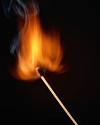
On 24 Oct 1836, Alonzo Dwight Phillips of Springfield, Massachusetts, received the first U.S. patent for the phosphorous friction safety match. The first friction matches, using a mixture of chemicals for their heads, were made and sold in England in 1827. Phillips' match, which could be struck on any rough surface, was the first genuine friction match made in America. Known as “loco focos,” and later as “lucifers,” these matches were made entirely by hand from a mixture of chalk, phosphorus, glue and brimstone (sulphur). The introduction of gas for lighting and cooking, and the spread of cigar smoking, made the lucifer almost a necessity. By the time of the Civil War, about a million matches a day were being manufactured. You can read U.S. Patent 68 for details of how Phillips made his matches.

On 24 Oct 1911, Nathaniel Wyeth was born, inventor of the familiar plastic used for beverage bottles and other containers. Today's book pick is: Plastic: The Making of a Synthetic Century, by Stephen Fenichell. With lots more than just Wyeth's discovery described, your webmaster has found this an excellent source to read as a history of the many plastics now found in daily life. Polyethylene airborne-radar insulation (which the British had and the Nazis didn't) helped the Allies win the air war over Europe. Computer discs and audio- and videotape (remember those?) made possible the information age, while plastic hearts and limbs prolong and improve human life. Fenichell unreels a fascinating tale of scientific discovery, tragedies, rare ingenuity and serendipity.
It is available from Amazon, typically about New from $67.43. Used from $4.01. (As of earlier time of writing - subject to change.)
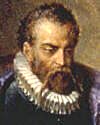 | Simplicibus itaque verbis gaudet Mathematica Veritas, cum etiam per se simplex sit Veritatis oratio. (So Mathematical Truth prefers simple words since the language of Truth is itself simple.) |
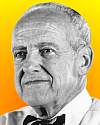 | I’m convinced that the best solutions are often the ones that are counterintuitive—that challenge conventional thinking—and end in breakthroughs. It is always easier to do things the same old way … why change? To fight this, keep your dissatisfaction index high and break with tradition. Don’t be too quick to accept the way things are being done. Question whether there’s a better way. Very often you will find that once you make this break from the usual way - and incidentally, this is probably the hardest thing to do—and start on a new track your horizon of new thoughts immediately broadens. New ideas flow in like water. Always keep your interests broad - don’t let your mind be stunted by a limited view. |
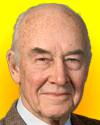 | Beneath all the wealth of detail in a geological map lies an elegant, orderly simplicity. |
| Before you look at today's web page, see if you can answer some of these questions about the events that happened on this day. Some of the names are very familiar. Others will likely stump you. Tickle your curiosity with these questions, then check your answers on today's web page. | |
| Births | |
 | Nathaniel Wyeth, born 24 Oct 1911 was a US chemist and inventor of the first plastic strong enough to hold highly pressurized carbonated beverages without bursting, and safe enough to pass muster with the FDA. What plastic did Wyeth develop?? |
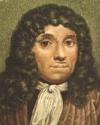 | A Dutch microscopist, born 24 Oct 1632, was the first to observe bacteria and protozoa. His researches on lower animals refuted the doctrine of spontaneous generation, and his observations helped lay the foundations for the sciences of bacteriology and protozoology. Can you name this scientist? |
| Deaths | |
 | Tycho Brahe was an astronomer (1546-1601) who developed astronomical instruments to measure and fix the positions of stars paved the way for future discoveries. His accurate observations—the best before the invention of the telescope—included a comprehensive study of the solar system. What was his nationality? |
| Events | |
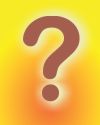 | On 24 Oct 1939, at DuPont's Wilmington, Delaware nylon factory the a new product was sold to employees, the first of such items sold in the U.S. The fibre was strong, elastic, and did not absorb moisture. Nationwide sales began on 15 May 1940. What product was this item designed to replace? |
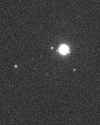 | On 24 Oct 1851, William Lassell discovered Ariel and Umbriel, satellites of Uranus. Each were named after characters in literature. The moons of Uranus were named after characters in works by which one author? |
Fast answers for the previous newsletter for October 23: the decade containing the year 1916 • tornadoes, on the basis of their damage • John Boyd Dunlop • John Dalton • 3.4 billion years.
 If you enjoy this newsletter, the website, or wish to offer encouragement or ideas, please send feedback by using your mail reader Reply button.
If you enjoy this newsletter, the website, or wish to offer encouragement or ideas, please send feedback by using your mail reader Reply button. Your click on a Facebook, StumbleUpon, or other social button on the site webpages is also a welcome sign of appreciation. Thank you for using them.
© This newsletter is copyright 2020 by todayinsci.com. Please respect the Webmaster's wishes and do not put copies online of the Newsletter — or any Today in Science History webpage. (If you already have done so, please remove them. Thank you.) Offline use in education is encouraged such as a printout on a bulletin board, or projected for classroom viewing. Online, descriptive links to our pages are welcomed, as these will provide a reader with the most recent revisions, additions and/or corrections of a webpage. For any other copyright questions, please contact the Webmaster by using your mail reader Reply button.
--
If you do not want to receive any more newsletters, Unsubscribe
To update your preferences and to unsubscribe visit this link
Executive Real Estate Business Class
-
"It was like a man with wings. It wasn't like anything you'd see on TV or in a monster movie." ...
About the publisher
Search This Blog
Blog Archive
-
▼
2020
(1542)
-
▼
October
(171)
- The Compass: Iceland
- A Very Special Halloween Edition Of Our Scariest S...
- On This Day for October 31 - Luther's Ninety-five ...
- Newsletter for Saturday 31 October.
- CORONAVIRUS UPDATE: Why some people are supersprea...
- October 31: Martin Luther Challenges the Pope, Mic...
- PHOTOGRAPHY: Capturing America's pent-up energy to...
- The Terrifying Story Of The Mothman, The Little-Kn...
- The Roundup Top Ten from History News Network
- On This Day for October 30 - Henry Tudor crowned k...
- Newsletter for Friday 30 October.
- October 30: Tsar Nicholas II 'October Manifesto', ...
- ANIMALS: Will oil drilling spread across spectacul...
- On This Day for October 29 - Collapse of U.S. stoc...
- Newsletter for Thursday 29 October.
- October 29: End of China's One-Child Policy and Lo...
- YOUR WEEKLY ESCAPE: The science of the heebie-jeebies
- SCIENCE: Will every hurricane season be like this?
- The Latest News from History News Network
- On This Day for October 28 - Statue of Liberty ded...
- Newsletter for Wednesday 28 October.
- October 28: Fingerprints, Prohibition and the Blac...
- TRAVEL: When do Americans say they’ll fly again?
- Were vampire hunters real? Subscribe to find out.
- On This Day for October 27 - Anwar Sadat and Menac...
- Newsletter for Tuesday 27 October.
- October 27: China's Population Reaches 1 Billion a...
- HISTORY: Rush of early voters spurs talk of a record
- New This Week on History News Network
- On This Day for October 26 - Park Chung Hee assass...
- Newsletter for Monday 26 October.
- October 26: Beginning of the Red Cross and the Gun...
- FAMILY: When the best advice to your kids isn't yours
- On This Day for October 25 - English triumph at Ag...
- Newsletter for Sunday 25 October.
- October 25: The Great United Nations China Switch ...
- The Compass: Japan
- On This Day for October 24 - United Nations establ...
- Newsletter for Saturday 24 October.
- October 24: Two Great Historical Stock Market Crashes
- CORONAVIRUS UPDATE: How to fight the COVID-19 'inf...
- PHOTOGRAPHY: The best photojournalism of the decade
- What did Cleopatra look like? | Charles and Diana’...
- 11 Spooky Urban Legends Based On Terrifying True S...
- The Roundup Top Ten for October 23, 2020
- On This Day for October 23 - U.S. and French troop...
- Newsletter for Friday 23 October.
- October 23: US National Debt, an Old Fossil and th...
- ANIMALS: They were researching cheetahs. Iran call...
- Love the show Weird But True? Get more WBT with ev...
- Early Holiday Savings at the HISTORY Store
- Introducing the Britannica All New Kids' Encyclope...
- On This Day for October 22 - Cuban missile crisis,...
- Newsletter for Thursday 22 October.
- YOUR WEEKLY ESCAPE: These prehistoric footprints t...
- October 22: Greenwich Mean Time, the Cuban Missile...
- SCIENCE: Will the next generation fight a pandemic...
- On This Day for October 21 - Magellan's discovery ...
- The Latest News from History News Network
- October 21: Battle of Trafalgar, China Occupies Ti...
- TRAVEL: We found 50 stories in 50 states for ‘Amer...
- On This Day for October 20 - Opening of Sydney Ope...
- Newsletter for Tuesday 20 October.
- October 20: On This Day in History
- HISTORY: Why do we have the Electoral College?
- Join photographer Pete Muller for an online conver...
- New This Week on History News Network
- On This Day for October 19 - Surrender of Lord Cor...
- Newsletter for Monday 19 October.
- October 19: On This Day in History
- FAMILY: Letting kids take charge
- The lost heirs of Henry VIII
- On This Day for October 18 - Alaska Purchase appro...
- Newsletter for Sunday 18 October.
- October 18: French Protestants, The Alaska Purchas...
- The Compass: Portugal
- On This Day for October 17 - Mother Teresa awarded...
- Newsletter for Saturday 17 October.
- October 17: Burma Railway, OPEC Oil Embargo and Ra...
- CORONAVIRUS UPDATE: Who will be first in line for ...
- PHOTOGRAPHY: How COVID-19 changed our work
- The 25 Best Horror Movies Of All Time — And The Ch...
- This Week's Roundup Top Ten from History News Network
- On This Day for October 16 - Marie-Antoinette guil...
- Newsletter for Friday 16 October.
- October 16: Battle of Leipzig, Mao's Long March an...
- ANIMALS: The wildlife photo of the year
- Challenge grant: Help unlock important funds for w...
- On This Day for October 15 - Final conference on A...
- Newsletter for Thursday 15 October.
- October 15: Napoleon's Exile, the 1st Oral Contrac...
- YOUR WEEKLY ESCAPE: A murder mystery 430,000 years...
- SCIENCE: Will the next generation fight a pandemic...
- The Latest News on History News Network
- On This Day for October 14 - Battle of Hastings, D...
- Newsletter for Wednesday 14 October.
- Historic Trends in our time may be overcome with g...
- October 14: William the Conqueror, Robert the Bruc...
- The Embarrassing Final Moments Of 10 Revered Histo...
- TRAVEL: Does your wine taste like fire?
-
▼
October
(171)
-
Blogroll
-
About
HistoryFact










0 comments:
Post a Comment